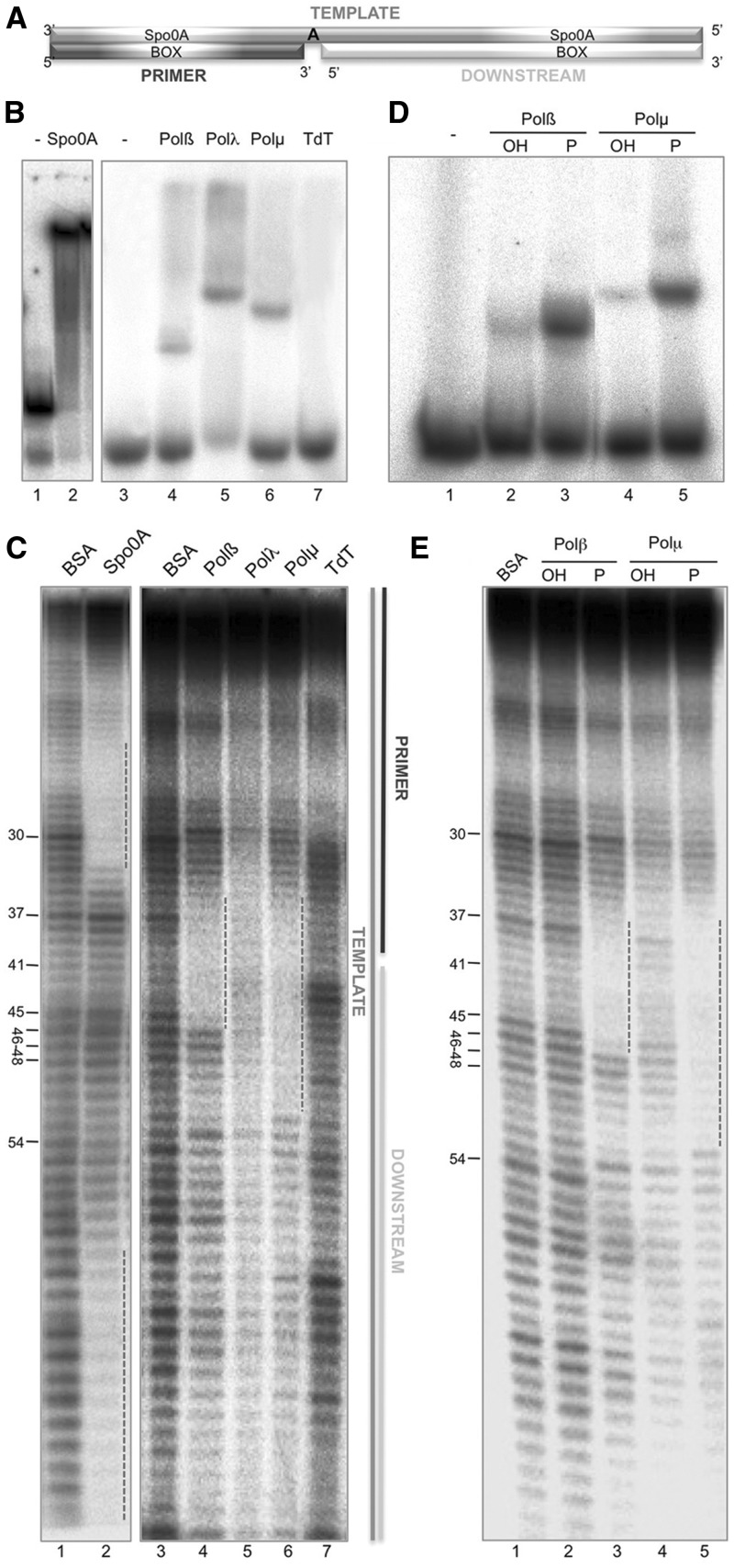Figure 1.
DNA-binding properties of human family X polymerases: importance of the 5′-P group for DNA binding. (A) Scheme of the substrates used for the footprinting assays. To produce this substrate the oligonucleotides FP-T (template), FP-P (primer) and FP-D (downstream) were hybridized. (B) DNA-binding affinity of the indicated proteins (Polβ and Polµ at 100 nM, Polλ at 500 nM) was assayed as described in ‘Materials and Methods’ section, using the footprinting substrate radioactively labeled at the 5′-end of the template strand. Gel was dried and the labeled fragments detected by autoradiography. (C) Footprinting assay of the control protein Spo0A (1 µg) or each of the members of the X family (Polβ, 1.5 µg; Polµ, 1.5 µg; Polλ, 10 µg, TdT, 10 µg) was conducted as described in ‘Materials and Methods’ section, in the presence of 100 µM dTTP and 2.5 mM MgCl2. Ten micrograms of BSA were added to the control lane. (D) EMSA of Polβ and Polµ (100 nM) using a gapped DNA substrate formed by the oligonucleotides Sp1C (labeled at the 5′-end), T28 and D12, the latter either having (P) of lacking (OH) a 5′-P group. Gel was dried and the labeled fragments detected by autoradiography. E) Footprinting assay of Polβ (1.5 µg) or Polµ (1.5 µg) with a gapped substrate that either contains (P) or lacks (OH) a 5′-P group in the downstream strand, in the presence of 100 µM dTTP and 2.5 mM MgCl2. Ten micrograms of BSA was added to the control lane. Gel was dried and the labeled fragments detected by autoradiography.

